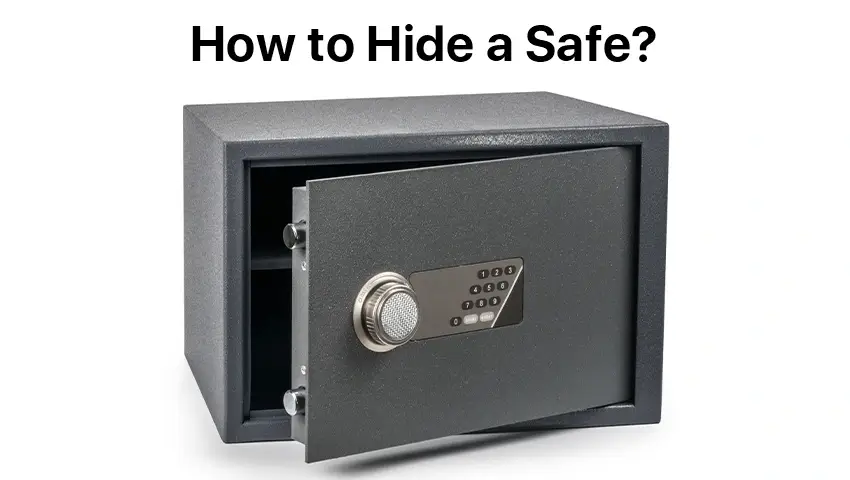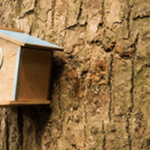Safes are an essential tool for safeguarding valuables like important documents, cash, and heirlooms. However, a visible or poorly concealed safe can easily become a target. Properly hiding your safe is crucial to keep it secure from thieves or damage. In this guide, we’ll explore practical tips, creative hiding spots, and additional security measures to help you protect your belongings.
Contents
Factors to Consider When Hiding a Safe
When it comes to securing your valuables, hiding the safe effectively is just as important as owning one. Before you settle on a hiding spot, it’s crucial to evaluate several factors to ensure both security and functionality. Here’s an in-depth look at what you should consider:
1. Accessibility vs. Security
Finding a balance between accessibility and security is key. Think about how often you’ll need to access your safe.
- Frequent Access: If you need to retrieve items daily or weekly, choose a spot that is convenient yet discreet. For example, a wall safe hidden behind a painting in your living room could work.
- Occasional Access: For safes storing items you rarely need, such as important documents or family heirlooms, you can prioritize security over convenience. Hidden compartments in the floor or behind heavy furniture may be ideal.
2. Type of Safe
Different types of safes have unique placement requirements. Knowing your safe’s specifications can help you choose the best location:
- Wall Safes: These are designed to fit within standard wall cavities and are best concealed behind artwork, mirrors, or bookshelves.
- Floor Safes: Typically installed into concrete or wood flooring, these safes require a sturdy surface and are often hidden under rugs or furniture.
- Portable Safes: Lightweight and versatile, these safes can be moved, making them ideal for disguising within furniture or household items. However, their mobility can also make them a target for theft if not properly secured.
3. Weight and Installation
Heavy safes require stable and durable locations. Placing a heavy safe on an upper floor may require structural support to prevent damage to the flooring. Similarly, ensure that the installation process doesn’t weaken walls or floors, as this could compromise both the safe and your home’s integrity.
4. Environmental Conditions
Safes need to be protected from external factors that could damage their contents:
- Moisture: Avoid damp areas like basements or spaces prone to leaks. If the safe must be in such locations, invest in a waterproof model or use dehumidifiers to protect its contents.
- Fire Risk: Consider a fireproof safe if it will be placed near heat sources like fireplaces or kitchens.
Extreme Temperatures: Avoid spots exposed to direct sunlight or extreme cold, as temperature fluctuations can damage the safe or its contents over time.
5. Visibility to Others
Avoid areas that are easily visible to visitors or contractors. For example:
- Common Traffic Areas: Living rooms or entryways may not be ideal unless the safe is well-camouflaged.
- Shared Spaces: If you live with roommates or in a shared property, prioritize discreet hiding spots to maintain privacy.
6. Potential Risks in Emergencies
Consider how your chosen hiding spot would perform in various emergency scenarios:
- Fire: Will the safe’s location provide adequate protection in case of a house fire?
- Flood: Is the safe elevated or waterproof if placed in flood-prone areas?
- Break-ins: Could the safe’s placement allow enough time for emergency services to respond if an alarm is triggered?
7. Custom Hiding Spot Potential
Think creatively about whether your home has areas that can be modified to hide a safe:
- False walls, hidden compartments, or under-floor storage spaces can be customized to house a safe discreetly.
- If you’re renovating or building a home, plan ahead for concealed safe spaces, such as hidden niches or built-in safes.
By thoroughly evaluating these factors, you can ensure that your safe is not only secure but also protected from environmental threats and easily accessible when needed. A thoughtful approach to hiding your safe can make all the difference in protecting your most valuable possessions.
Creative Hiding Spots for Safes
- Behind Wall Art or Mirrors: Conceal a wall safe with a painting, mirror, or decorative panel.
- Under Floorboards or Tiles: Create a hidden compartment beneath rugs or removable tiles.
- Inside Furniture: Ottomans, dressers, or bed frames can double as clever hiding spots.
- In Plain Sight: Disguise safes as everyday items like books, toolboxes, or storage bins.
- Garage or Basement Storage: Use less-trafficked areas, such as toolboxes or storage shelves.
Tips to Enhance Concealment
- Use Decoys: Place a cheaper, less secure lockbox in an obvious location to divert attention.
- Customize the Safe: Match its exterior to the surroundings for seamless blending.
- Avoid Predictable Spots: Stay away from closets, under beds, or cabinets—these are intruders’ first targets.
Additional Security Measures
To further safeguard your safe, consider these enhancements:
- Security Cameras: Monitor the safe’s location with a visible or hidden camera.
- Alarms and Motion Sensors: Detect unauthorized access attempts.
- Biometric Safes: Upgrade to safes with fingerprint or retina scanners for enhanced protection.
- Backup Keys and Codes: Keep spares in a separate, secure location.
Conclusion
Hiding a safe effectively requires a combination of creativity, strategy, and security measures. By choosing the right location, blending the safe with its surroundings, and adding extra layers of protection, you can ensure your valuables are safeguarded. Take the time to evaluate your home, think outside the box, and invest in the security your possessions deserve. A well-hidden safe is more than just a box; it’s peace of mind.

